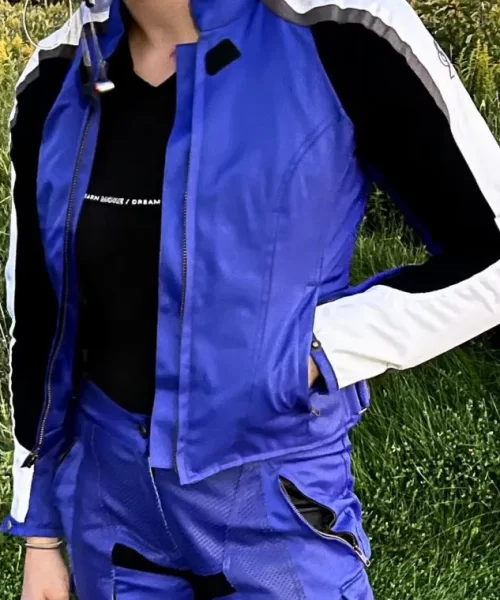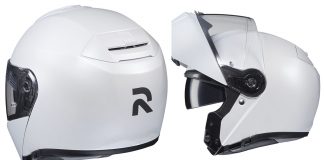The theme of this review is to make Arai helmet customers aware of their options when buying a helmet and to consider proper fit a critical aspect of safety. Customers shopping for a new helmet and those who have purchased an Arai in the past are encouraged to reconfirm and personalize the fit.
The Arai Corsair-X Hayden Laguna is a graphic reproduction of the helmet Nicky Hayden debuted in 2005 at his first MotoGP race on US soil, which became his first race win in the global series. To honor the moment at Laguna Seca Raceway, Arai released this colorway on the RX-7 Corsair, a predecessor to the current Corsair-X.
The colorway design has not held up over time—the Urban Camo is as dated as the aspect ratio of the 2005 race footage from motogp.com. However, NH69 fans, including me, are picking this helmet. At the time of this writing, the Nicky Reset is now available, which is sure to further reduce the take rate on the Hayden Laguna. If you want one to collect or wear, I suggest picking one up soon.
What more can be said about the top-of-the-Arai-food-chain Corsair-X, a popular helmet for racers and track day junkies the world over? Light weight and good airflow make it an excellent choice as a street helmet when comfort and safety are at the forefront.
With six adjustable inlet vents and seven outlets to keep cool, plenty of features encompass the Corsair-X. An adjustable chin curtain and a rear diffuser allow you to experiment with ideal airflow around the helmet, not just through it.
The clever demist position for the faceshield keeps it securely latched, while still being cracked open to eliminate fogging in the worst of conditions.
The signature brow vents incorporated through the top of the faceshield are there for a fundamental reason—safety. The vents allow air to enter the front of the helmet at the temple and forehead while eliminating any holes in a critical area of the outer shell or inner EPS liner. The ducts at the top of the face opening are part of the liner, and allow the helmet’s structure to be as strong as possible.
Another non-obvious safety design feature is the VAS Shield Latch—basically, a double-jointed shield pivot point that allows the shield to mount lower, again, giving the crown of the helmet more structural integrity. Every aspect of an Arai helmet design considers safety first.
One common oversight that I have suffered from myself is the non-obvious position of the chin bar vent. Its downward position, which you would think allows maximum direct air in for cooling, is the defog position. To maximize airflow for cooling, you’ll have to leave the vent in its partially closed center position—counterintuitive.
Opening the faceshield when the latch is locked can take some getting used to with a bulky racing glove on. You have to slide your left thumb over the lever and catch the edge of the opening shield just right to do it in one motion.
Removing the faceshield for cleaning or swapping to another shield is another test in patience and manual dexterity, at least initially. You’ll also have to read the manual and stare at the tiny images, or go to YouTube—hopefully not while you’re stopped for gas or just before your group is about to be called out for practice.
If you know how to do it, it is easy, though not intuitive. Although the system looks like older model Arais on the outside, it is an entirely different design. It is a fine instrument, meant to protect your most important instrument. Get to know it—take care of it, and it will take care of you.
The Service Pavilion in New Holland, Penn., helped add an additional dimension to this test. When I first got the helmet for this review, it was a Large. It said so, right there on the inside sticker: “L HEAD SIZE 7 1/4-7 3/8 (59-60cm)”. However, I wear a Medium. What to do?
I needed to get the helmet resized and fitted to my head. I also needed a couple of new Snell-approved helmets so my kids could meet the new safety regulations at our local mini-moto track—Sandy Hook Speedway in Street, Maryland.
The Corsair-X is Arai’s Intermediate Oval interior fit shape. Other models in the Arai lineup are Round Oval and Long Oval to cover a wide range of head shapes.
So, how do you change a helmet from a Large to a Medium? And how do you know what size you should be wearing? I’d like to answer these questions and shed some light on proper helmet fitting. I’m not an expert, but I did consult with one—two, in fact. Robert and Brianna Miller, who run The Service Pavilion, are factory-trained Arai dealers. They follow a process to size the helmet to the rider. Start by confirming the size of your head by taking a measurement of its circumference. Next, confirm the helmet shape and subsequent helmet model by a fitting session with a Q&A session, which focuses on asking the wearer to focus on pressure points around the circumference of the skull.Once the shell size and shape are determined, the headliner is chosen. It could be the standard sizes headliner that comes with the helmet shell size, or you can choose to size up or down the liner to fine-tune proper fitting. Medium, Large, or somewhere in between.
Now that the helmet is fitted correctly to the top of your head, attention moves to the cheek pads and the pressure they put on your cheeks. If needed, interior padding can be swapped out to conform to the shape of the face.
The final step is the fun part, and the step most shoppers take first—picking out the solid color or graphic scheme you want. The downside is, if your head is of a particular shape, say on the rounder side of round or oval, you’ll be limited to a specific model. Each model has its own set of graphics options. Solid colors cross between models, but if you want a favorite races replica helmet or you wish to match your bike, you’ll have to settle for what’s available in your predetermined head shape.
My Hayden Laguna was turned from a Large into a Medium by swapping out the removable headliner from 7mm thick to 10mm. The cheek pads were increased in size from 20mm to 25mm to tighten the helmet around my jawline. Consideration is made for the break-in of the liner, as it will loosen a bit after use.
Five manufactured shell sizes are used by Arai to create the range of nine consumer helmet sizes—XXXL & XXL share the same shell, as do Large and Medium. XL and Small helmets have specific shell sizes that aren’t shared with any other size. The smallest shell is used for sizes XS, XXS, and XXXS.
Even within a single formal size, there is variability with headliner sizes, plus peelable layers to truly dial in comfort. Cheek pads come in seven thicknesses and give you flexibility in the amount of pressure on the sides of your face so you can match what you are comfortable with.
Rob at The Service Pavilion offered some interesting, and possibly scary, stats he has picked up from his 12+ years and 20,000+ fittings. Nine out of ten Arai helmet owners are wearing at least one size too big. And, of the nine, as many as five riders are wearing helmets two sizes over what they should have on. Probably one of those riders should be wearing a helmet three sizes smaller than what the rider thinks is correct.
If you’re buying a helmet that’s comfortable to put on, chances are it’s too big. If it doesn’t fit properly, it will not work as designed. The good news is, if you already own an Arai you are happy with, it’s likely that the helmet can be fit better to your head for less than $100. If you are in the market for a helmet, find a local authorized Arai dealer and spend a half-hour to get yourself fitted into the right size and shape helmet. If you do not have a dealer nearby, The Service Pavilion offers a refundable online fitting service.
There are no formal safety standards specifically for kids motorcycle helmets. When I went shopping for a high-quality helmet from a reputable brand for my kids, lids for $120 or less were all I could find. I’m wearing $800+ helmets, so it feels strange and, honestly, irresponsible to equip my kids with something far less.
This hunt for the right helmet led me to first learn about the extensive refitting that can be done with an Arai helmet. With both my kids at The Service Pavilion, the measuring and fitting exercise was on full display. I stood back and watched Brianna fit both kids to their unique helmet model and size.
My 11-year-old son ended with a Signet-X and its Long Oval shape. An XS headliner was customized to relax specific area fit by removing a 5mm peel-off slice on the temple pads of the headliner. Two sizes thicker on the cheek pads were snapped in to compensate for his thin jawline to give him all-day comfort and ensure his eyes were centered in the shield opening.
My 9-year-old daughter was crowned, like Daddy, with a Corsair-X, as she shares the same Intermediate Oval shape as me. Her XS had to be made into an XXXS with two sizes thicker headliner along with going from 25mm to 40mm cheek pads to eliminate excessive side-to-side helmet movement on her head.
Sure, on top of the helmet price, I had to pay for the additional liners and pads, but there is room to grow. They’ll get the full five years out of the helmets because the interior padding can be swapped as their heads grow. After five years of use—or seven years after manufacturing, whichever comes first—the helmet ages out and must be replaced, regardless of fit.
If you are considering an Arai helmet for yourself or a loved one, take the purchase experience just one step further and spend the money to take full advantage of the engineered solutions Arai offers its customers by getting properly fitted. If you already have an Arai and it’s not comfortable or has become too loose, you can make it better. You’ll be safer in case of a get-off, and you’ll never buy an off-the-shelf helmet again.

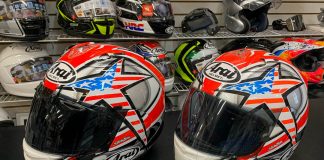








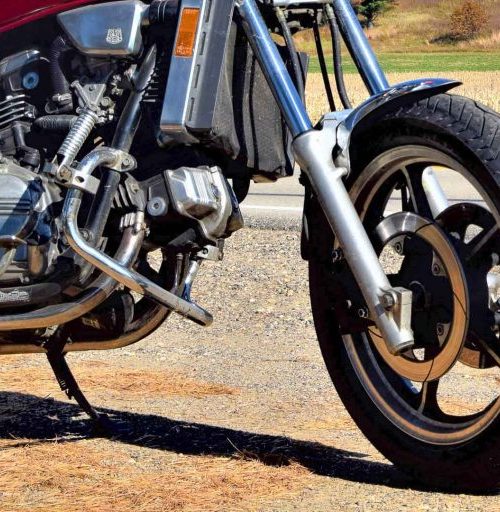
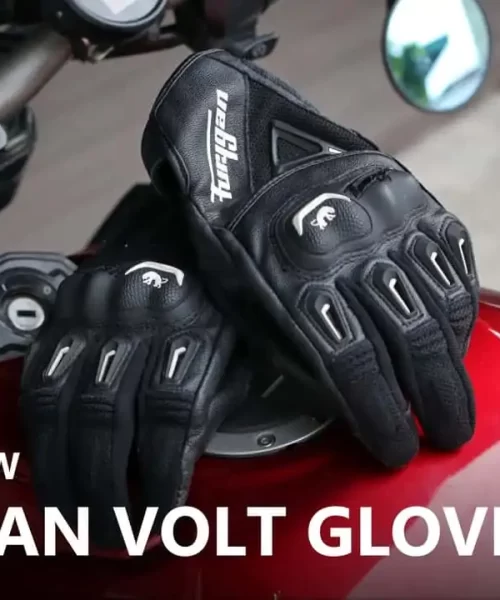
![Scorpion Covert Hoodie Review [Motorcycle Jacket Alternative]](https://motogeartalk.com/wp-content/uploads/2023/11/scorpion-covert-hoodie-review-technical-motorcycle-jacket-apparel-2-768x512-1-500x512.jpg)

